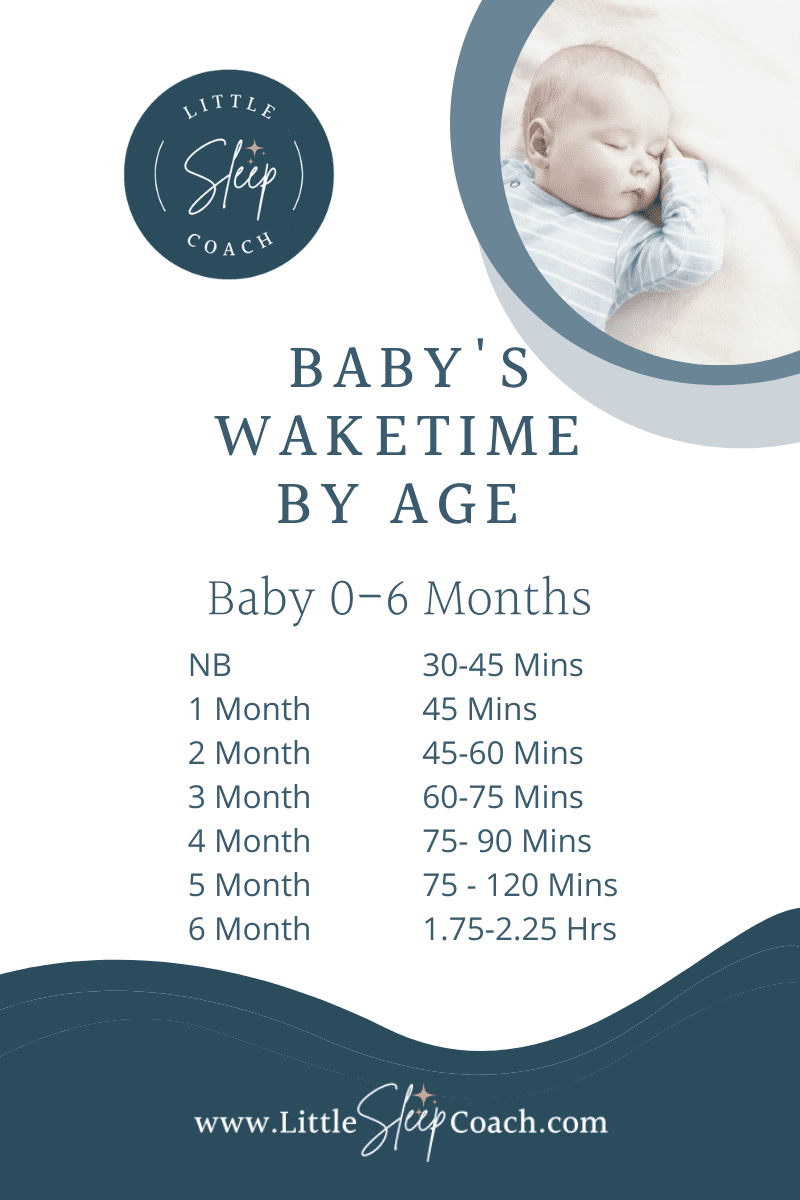Here’s something I bet you didn’t know before Motherhood, Wake windows! Or Awake windows. It seems there are many things that escape us until we need to know. In the first few weeks of motherhood wake windows are something you should definitely become familiar with.
What is a wake window?
It is the time between naps (or sleep). It is calculated from the moment your baby opens their eyes from one sleep to when they close them again for the next sleep. It is basically a range of time for your baby’s age that they can tolerate being awake for before becoming overtired. The younger the baby, the less awake time they can handle before their system goes into overload and they need to have a sleep so their overactive brain has a chance to rest and process. .
What’s the big deal you may be thinking? Your baby has a sensitive circadian rhythm. The fine tuning of the wake window can come down to 5 min for younger babies. Ask any Mom who has gone through the 4 month sleep regression and they will tell you. Babies find it very difficult to fall asleep once they have surpassed the sweet spot for sleep. AKA the end of their wake window. Some babies will give very clear signs and you’ll have lots of time to get them prepared for bed so they’re asleep at the right time. Some babies won’t really show any tired signs until it’s too late.
Once a baby passes their wake window they become overtired. Overtired babies release a stress hormone called cortisol. Cortisol is made in the adrenal glands, that right the human made espresso machine! Ever wonder why older babies and toddlers look like they have sneaked off with mom’s coffee? They start behaving like they are wired and ready to take on the world. This is what overtiredness can look like in older babies and toddlers. For younger babies it can be inconsolable crying, frequently mistaken for a coliky baby.
Cortisol also inhibits the production and release of another hormone – melatonin – which is the one we actually need in order to fall and stay asleep. The more overtired your baby is, the less likely they are to fall asleep easily. If they’re overtired in the run up to bedtime, they are pretty much guaranteed a poor night of sleep, often waking up soon after they have gone to bed. A term known as ‘false starts’.
So how can you tell if your baby is overtired?
- Waking soon after being put to bed at nighttime
- Waking early in the morning
- Frequent nighttime wakings
- Resisting sleep
- Crying or fussing and difficult to settle
- Older babies and toddler seem hyperactive or hit a ‘second wind’
How to avoid an overtired baby
- Establish a good bedtime routine. It shouldn’t be dragged out ideally 30min or less for younger babies.
- Make sure that you are practicing healthy sleep habits. Have your baby napping in their sleep space at least 80% of the time
- Absolutely follow age appropriate wake windows. This is more than half the battle. Play around with putting them down +/-5-10mins (depending on the age of your little one) to find their sweet spot for sleep.
- Work on extending naps. By simply pausing before rushing in to pick up your baby, you might find they fall back to sleep and are only waking to connect sleep cycles.
We’ve taken a long time formulating our Sleep Programs to harness the perfect awake times for babies at each age, allowing them to sleep well – day and night.


